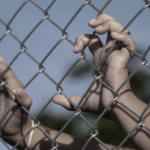Schoolyard Assault Highlights Trend Towards Violence in Youth Culture

A recent case involving the arrest of a woman and two young girls over the alleged attempted assault of a student and brutal assault of two staff members at a school in Northern New South Wales exemplifies a disturbing trend towards violence not just in schools, but in youth culture generally.
The Incident
According to police, at around 10.30am on 25 March 2025 officers attached to New England Police District were called to attend Armidale Secondary School in response to reports that two students had assaulted staff members.
Upon arrival, the officers determined that the students, aged 11 and 13, had allegedly attempted to attack a fellow student before assaulting staff members who sought to intervene. A 34-year-old woman arrive during the incident and continued abusing staff members and police.
The two girls were arrested after the incident, with the woman arrested and charged with resisting, intimidating, and failing to comply with police.
Kim Alford, the school principal, stated that the school carried out their lockdown procedure from the beginning of the assault until 11:45 am, more than one hour after the police arrived. Students remained in their classrooms with teachers until police dealt with the incident.
Although no students were hurt, four staff members required treatment for their injuries sustained, with two being taken to another location for medical treatment. The NSW Department of Education issued a statement saying that ‘violence of any kind is unacceptable in NSW public schools’.
However, the lack of urgency in this situation – and the absence of any accurate diagnosis or
treatment for the increased surge in violence among Australian youth, especially in a public school setting — has led to an epidemic. The urgency of the situation cannot be overstated. Youth crime in the country is at an all-time high, coupled with the fact that the education system, and the government, are not addressing and helping the root causes of the violence.
Does Australia require a complete overhaul of the education system, or is the lack of support from the government the only thing to blame when it comes to soaring crime rates? The need for systemic change is evident, and it’s crucial that we advocate for this reform.
Factors Behind the Rise in Youth Crime
The incident in the Armidale school may be seen as part of a broader trend towards violence in youth culture, one which many see – at least in part – as resulting from a breakdown in social cohesion in peer groups in favour of a move towards online communications, compounded by the mental impact of significant events such as Covid shutdowns.
Indeed, figures suggest that youth crime has been on the rise over the last three years, increasing by a 18.2% since 2022.
In addition to the stated general breakdown in social bonds, some suggest that other contributors to the increase in delinquent behaviour include inadequate support of children with underlying mental issues or learning disabilities, as well as those who have been exposed to physical or mental violence, or basic resources.
Going back to the statistics, criminal offences committed by children aged 10 to 14-years-old has increased by 37.3% since 2022, highlighting how this epidemic not only threatens the learning environment of children at school, but can trickle into other areas of kids’ lives, such as during extracurricular activities or at home.
Maybe those in charge, such as teachers, government officials, lawmakers, coaches, and parents are missing the warning signs. Numerous red flags from kids indicate they may require additional services, counselling, or other types of help to prevent criminal behaviour.
In fact, 83% of young people in police custody have a psychological disability, with 52.7% of youth offenders having attended a special needs class and 93.8% stating they had been suspended on at least one occasion. Suspension, expulsion, and learning disability needs are all warning signs that a child may be on the path to violent, or criminal, behaviour — signs that often go unnoticed or untreated when it comes to the educational system in Australia.
If the Australian education system focused more on a value-based system that increases engagement, boosts the quality of learning institutions, and keeps children in the education system longer, Australia would see reduced youth crime rates. Changing the focus from group-style learning to one where students have their own learning outcomes would not only help reduce criminal behaviour, but it could lead to a stronger economy, increase student’s cognitive skills, and pave a better future for Australia.
Violence in Australian Public Schools
Something that goes hand in hand with increased youth crime due to a lack of understanding in a failing education system is crime within schools themselves. Not only does a merit-based education system lead to less engagement and a lower likelihood of finishing education, but it also creates a possible hostile atmosphere that increases the likelihood of violence on school grounds.
The New South Wales Department of Education recorded over 1,500 assaults in 2023 alone, an increase of almost 50% from the previous year. Incidents involving weapons increased by almost 500 from 2022 to 2023, totaling 728. During the same time frame, police were called to schools over 20,000 times for incidents involving pistols, shotguns, knives, swords, or scissors.
Not only does this create a hostile school environment for children and adults, but it also makes it almost impossible to focus on the task at hand—learning and socialising appropriately. Students have no desire to go to school in an antisocial atmosphere that could put them in harm’s way, leading to a sharp increase in pupils refusing to attend school and teachers leaving their jobs due to being put at risk.
The Australian Principal Occupational Health, Safety, and Wellbeing Survey in 2023 showed that threats of violence directed at school officials and teachers have increased to 54% — up from 37.9% when the survey first began in 2011. Out of the 54%, 48% of teachers experience physical violence firsthand.
Similarly, the Journal of School Violence published a study in 2024 that showed just how much youth crime and violence have affected their will to work and remain in the job. 25% of teachers feel unsafe in their workplace due to student aggression, lack of support, and lack of understanding from parents.
The Government Isn’t Addressing the Root of the Problem
One of the main issues when it comes to youth crime, especially in the education system, is the notable absence of addressing the leading causes of acting out and aggression. There are numerous social, mental, and psychological factors that cause youths in Australia to resort to violent behaviour to get what they want — and almost none of them are being taken seriously by the government.
For example, the Labor government in New South Wales believes that lengthening a student’s suspension without needing pre-approval from the Education Department and increasing the police presence within schools can help solve disciplinary issues. But, they are choosing to ignore the prevalent concerns of social inequality, problems with kids’ home lives, impoverished communities with a lack of resources, and the prevalence of violence within communities.
Economic factors are one of the main reasons why children may choose to act out within schools. If children live in an unstable home that doesn’t provide security, they may take out their feelings of isolation, irritation, and anger where they spend the most time — in school.
14.5% of children in Australia live below the poverty line, with severe food insecurity affecting nearly 900,000 families. Therefore, thousands of kids attend public schools every single day from low socio-economic backgrounds, leading to a possibly high-stress environment that is ill-equipped to deal with the needs of the student body.
Australian Youth Have Become Immune to Violence
Another factor that may be contributing to the rise in youth crime is the normalisation of violence within Australian society.
Australian teens have not only become accustomed to the presence of violence in media and daily life, but coupled with the drastic cutting of funding or removal of arts, sports, and other extracurricular activities make it almost impossible for youth to find an outlet for their energy or depression.
Australian teens today have grown up being exposed to war, pandemics, genocide, cyberbullying, political turmoil, social inequality, and environmental concerns, all of which have become ‘normalised’ in today’s media.
Desensitisation to media violence has been officially linked to aggressive thoughts, violence, and aggressive behaviour, all of which directly contribute to the rise in youth crime within society, and schools, in Australia.
So, is youth crime the problem, or a symptom of a bigger issue? Maybe Australian police forces and lawmakers who are looking to crack down on juvenile criminal behaviour aren’t looking at the bigger picture – and with this small of a lens, avoiding the root cause of the issue could prove to be fatal.






